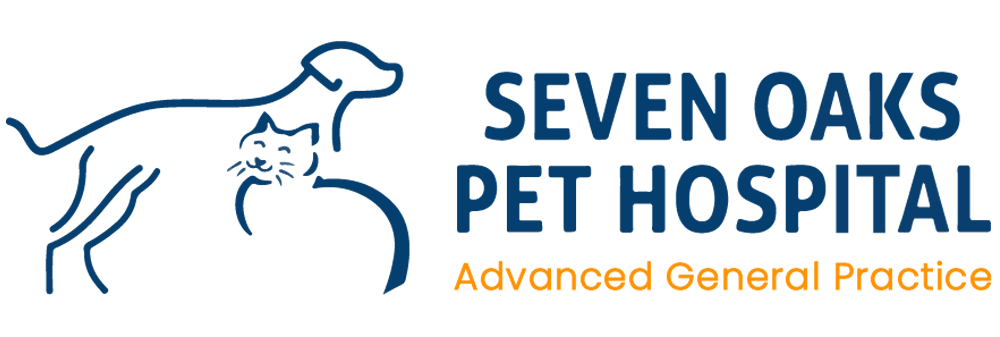Gastrointestinal Foreign Body Removal
To download and print this information, please click here.
Gastrointestinal Foreign Body in Dogs & Cats
- A gastric foreign body is a term that refers to any material other than food that is eaten and that results in a serious digestive problem in the stomach.
- Foreign bodies such as toys, string, clothing, and plastic can become lodged in the stomach and create an obstruction. Any household objects your pet chews on can become a foreign body problem.
- Dogs & Cats of any age are susceptible to developing foreign body problems but this is most commonly seen in young dogs less than 2 years of age. These youngsters are naturally curious and enjoy chewing.
- Although some smaller foreign bodies can pass through the gut without getting stuck, the larger pieces can result in serious gastrointestinal complications.
Symptoms:
- Sudden loss of appetite
- Vomiting
- Excessive drooling
- Abnormal bowel movements (wrong color, consistency, or amount)
Diagnosis:
- A complete and thorough medical history is important in diagnosing a gastric foreign body, including recent exposure or known chewing on foreign material. Physical exam findings can help your veterinarian determine the appropriate diagnostic tests. Test recommendations may include:
- Abdominal radiographs (X-rays) are an important test. Unfortunately, not all foreign material is evident based on the initial X-ray. Sometimes the addition of a dye material like barium is recommended to determine if a gastric foreign body and obstruction is present.
- Once a gastric foreign body is diagnosed, blood tests may be run to assess the general health of the dog. Since most gastric foreign bodies require anesthesia for removal, blood tests are strongly recommended.
Treatment:
- Most dogs with a gastric foreign body obstruction have been vomiting or not eating for a period of time.
- This leads to dehydration and electrolyte imbalance. Your veterinarian will recommend hospitalization with intravenous fluids prior to anesthesia.
- Once your dog is more stable, he will be anesthetized and the foreign object will be removed by one of two primary methods: endoscopy or surgery.
Endoscopy.
- This method can remove foreign objects within the stomach. If a significant amount of foreign material is located within the intestines, endoscopy may not be the appropriate choice.
- An endoscope is a flexible tube with a camera attachment. The tube is placed through the mouth into the stomach. After the foreign body is located, a grabbing instrument is inserted through the endoscope. By guiding the tip of the endoscope, the foreign object can be grasped and slowly pulled up through the esophagus and out the mouth.
- Advantages of an endoscope are the absence of an incision, which makes the recovery time quicker.
- The disadvantages of endoscopic removal are the inability to determine if there is any residual foreign material in the intestines. Also, some types of foreign material cannot be grasped by small endoscopic grabbers, such as large rocks and balls.
Surgery.
- If your veterinarian does not have the endoscopic capability or the foreign material has a low chance of being removed by an endoscope, surgery is recommended.
- After sedation, your dog will have his mid-abdomen shaved. An incision is made along the center of the abdomen. The stomach and intestines are examined for foreign material or obstructions. After localizing the foreign material, a small incision is made in the stomach or intestine and the foreign material is removed. The incision in the stomach or intestine is sutured. The body wall and skin are then sutured.
- Advantages of surgical removal of foreign material are the ability to examine the entire intestinal tract for other obstructions.
- Disadvantages include postoperative pain, prolonged hospital stay, and potential for infection from the stomach or intestinal incision.
- After removal of the foreign material, the dog is continued on intravenous fluids until vomiting has stopped and he is able to eat and drink without vomiting. Post-operative pain medication such as butorphanol as well as antibiotics may be given.
Hospitalization:
Based on the severity of intestinal damage, your dog may require 2-5 days of hospitalization
Home Care:
- Once the dog is able to eat and drink without vomiting, he is sent home.
For those dogs treated with endoscopy, there is minimal at home care.
- Feed a bland diet for two to three days and gradually return to a normal diet. Watch for not eating or vomiting.
- For those dogs undergoing surgery, at-home care includes incision care.
- Do not allow your dog to lick or chew at the sutures.
- An Elizabethan collar may be needed. Watch the incision for swelling or discharge.
- Sutures are generally removed in 10-14 days.
- Feed a bland diet for two to three days and gradually return to a normal diet. Watch for not eating or vomiting.
Preventative Care:
- The best way to prevent gastric foreign bodies is to prevent access to objects that could be swallowed.
- Allow your dog to only chew on toys that cannot be swallowed.
- If you suspect that your dog may have ingested something that may not pass through his intestinal tract, contact your veterinarian.
- Waiting until your dog starts to vomit will make the removal of the foreign material more difficult and costly.



